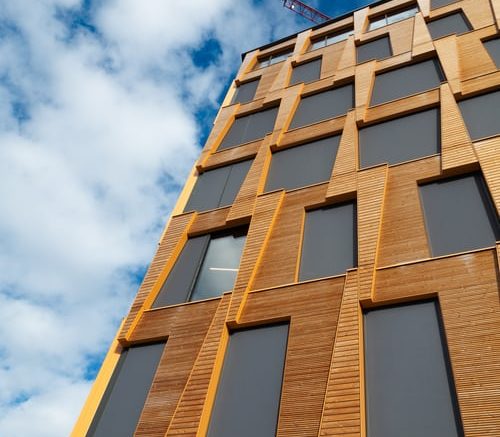Timber is basically defined as wood that has been processed into beams and planks for use in carpentry and building work. It is one of the most popular materials used in construction as well as production. The natural purpose of wood is to provide the structural strength to a plant in order to hold up the leaves, branches, and fruits against the wind and gravity. Therefore, this makes it an excellent structural material for building. Once trees are felled, the logs are shaped, seasoned and chemically treated to reduce moisture and chance of shrinking. Once the final product is built, they are painted and finished. The painting process can also induce chemical properties in the wood product, such as resistance to fungi, water, heat etc. The wood painting and seasoning process can be carried out by carpenters as well as painting service providers such as commercial painters Gold Coast.

Seasoning of Timber
Seasoning refers to the act of drying timber to remove moisture and sap from freshly cut wood. If moisture and sap is present in the finished timber structure, its subsequent drying will cause the timber to shrink, leading to cracks in the surface. It increases strength, reduces electrical conductivity, and reduces weight. Wood can be seasoned naturally or artificially. Natural seasoning involves leaving the wood out in airy conditions so that the water evaporates naturally. However, this is very slow, and water cannot be reduced after a certain percentage. Artificial seasoning can be done chemically, in a kiln, or electrically which is both quick and effective albeit expensive.
Preservation of Timber
Timber should be preserved to increase its lifespan and protect it from biological growth and moisture. Timber is preserved by either soaking it in a preservative or painting the surface with a preservative that acts as a sealant. The surface treatment is known as the non-pressure process and the other as immersion. There are several other more advanced processes such as Boucherie process, pressure process and open tank process which are highly effective, even against resistance species of wood but more expensive. The chemicals used in wood preservation should be penetrative, permanent and toxic to organic growth and insects even in small doses, along with being non-corrosive to metals and not compromise the strength of the wood.

Plywood
Plywood is a type of engineering wood made by bonding at least three thin sheets of wood using an adhesive. They are flexible, relatively inexpensive, workable, and reusable while being resistant to shrinkage, cracking, splitting etc. There are several types of plywood which are selected and used based on the unique features each type has and the functional requirements. The types include commercial plywood, waterproof plywood, flexo plywood, marine plywood, soft/hard wood plywood, tropical, aircraft and decorative plywood each with qualities ranging from water resistance, heat and humidify resistance to high strength, flexibility, and durability. However, there are several drawbacks of using plywood such as the layering process used in making plywood rendering it porous and susceptible to water damage if left over a longer time. This makes it generally unsuitable for outdoor use.

Be the first to comment on "Timber as a Structural Building Material"